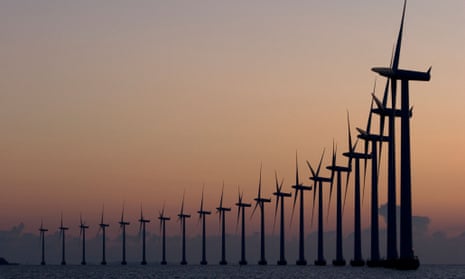Sustainable Energy Solutions: Harnessing Renewable Resources
In the hustle and bustle of our daily lives, amidst the cacophony of news and events, there's a quiet revolution underway—a shift towards sustainable energy solutions. It's a movement that holds the promise of a cleaner, greener future, powered by renewable resources. Welcome to the fascinating world of Sustainable Energy Solutions: Harnessing Renewable Resources.
Imagine a world where the air is crisp and clean, where the hum of energy production is harmonious with nature rather than disruptive. That's the vision driving the adoption of sustainable energy solutions. But what exactly does it entail?
At its core, sustainable energy solutions refer to methods of generating power that minimize environmental impact and promote long-term viability. This encompasses a range of technologies and practices, but perhaps none are as crucial as harnessing renewable resources—energy derived from sources that are naturally replenished, such as sunlight, wind, and water.
Key aspects of this transformative approach to energy production:
1. The Rise of Renewables:
Renewable energy sources have been utilized for centuries, from windmills grinding grain to water wheels powering mills. However, it's in recent decades that we've seen a surge in their adoption on a global scale. Advances in technology, coupled with growing environmental concerns and the quest for energy security, have propelled renewables into the spotlight.
Solar power, in particular, has experienced remarkable growth. With plummeting costs and increasing efficiency, solar panels adorn rooftops and vast solar farms stretch across deserts, turning sunlight into electricity. Wind energy, too, has seen exponential expansion, with towering turbines harnessing the kinetic energy of the breeze.
2. Environmental Benefits:
One of the most compelling aspects of renewable energy is its minimal environmental footprint. Unlike fossil fuels, which release harmful pollutants and greenhouse gases when burned, renewables produce clean energy with little to no emissions. This not only mitigates air and water pollution but also helps combat climate change—a pressing global issue with far-reaching consequences.
Consider the case of Germany, a pioneer in renewable energy adoption. Through its Energiewende (energy transition) initiative, the country has invested heavily in wind and solar power, gradually phasing out nuclear energy and reducing its reliance on coal. As a result, Germany has significantly reduced its carbon emissions while simultaneously driving innovation and creating jobs in the renewable energy sector.
3. Economic Opportunities:
Speaking of jobs, the transition to sustainable energy presents vast economic opportunities. From manufacturing and installation to maintenance and research, the renewable energy industry offers a diverse array of employment prospects. Moreover, investing in renewables can bolster energy security by reducing dependence on imported fuels and volatile global markets.
Take Denmark, for example, a nation renowned for its wind energy prowess. Wind power accounts for a substantial portion of Denmark's electricity generation, and the country's wind industry has become a major exporter of wind turbines and expertise. This not only strengthens Denmark's economy but also serves as a blueprint for other nations seeking to emulate its success.
4. Technological Innovation:
The beauty of sustainable energy solutions lies in their potential for innovation. From breakthroughs in energy storage to advancements in grid integration, researchers and engineers are constantly pushing the boundaries of what's possible. This spirit of innovation is driving down costs, improving efficiency, and expanding the reach of renewable technologies.
Consider the concept of "smart grids," intelligent electrical grids that optimize the flow of electricity based on supply and demand. By integrating renewable energy sources with energy storage systems and demand-side management, smart grids enhance reliability, resilience, and efficiency, paving the way for a more sustainable energy future.
5. Community Empowerment:
Beyond the technical aspects, sustainable energy solutions are about empowering communities. Whether through decentralized solar installations or community-owned wind farms, renewables enable local stakeholders to take control of their energy destiny. This not only fosters resilience in the face of natural disasters and grid disruptions but also fosters a sense of ownership and pride.
In the United States, the concept of community solar has gained traction, allowing households and businesses to subscribe to a shared solar array and reap the benefits of clean energy without the need for rooftop panels. Similarly, initiatives like microgrids provide localized power generation and distribution, serving as lifelines during emergencies and promoting self-sufficiency.
Conclusion: A Call to Action
As we've journeyed through the realm of sustainable energy solutions, we've glimpsed a future brimming with potential—a future where clean, renewable energy powers our homes, businesses, and communities. But this future is not guaranteed. It requires collective action, bold leadership, and unwavering commitment to sustainability.
So, let's heed the call to action. Let's embrace the power of tomorrow by investing in renewable resources, advocating for policies that prioritize sustainability, and supporting innovative solutions that propel us towards a brighter, greener future. Together, we can usher in a new era of energy—one that's not only sustainable but also equitable and inclusive.
As we conclude our exploration, I invite you to ponder the possibilities that lie ahead. What role will you play in shaping the energy landscape of tomorrow? How will you contribute to the transition towards sustainable energy solutions? The journey is just beginning, and the destination is within reach. Let's embark on this transformative voyage together, with hope in our hearts and determination in our actions.








Comments
Post a Comment